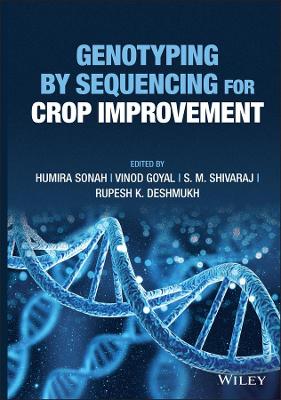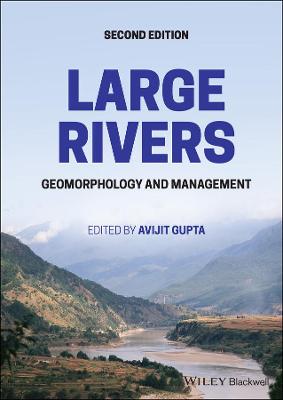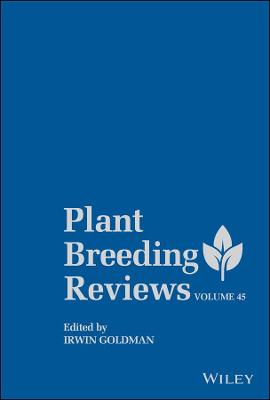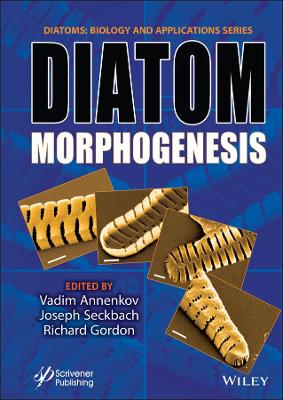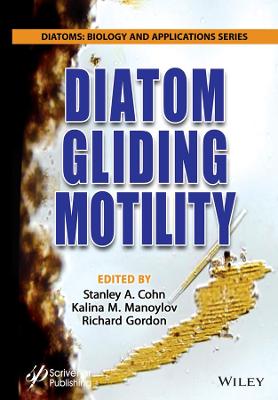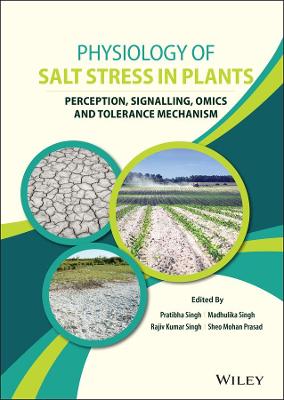Protective Chemical Agents in the Amelioration of Plant Abiotic Stress
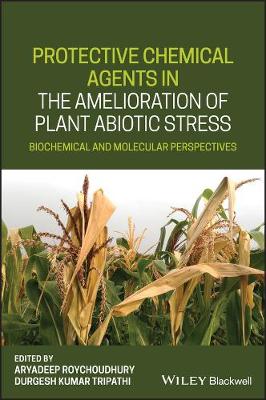 -15%
portes grátis
-15%
portes grátis
Protective Chemical Agents in the Amelioration of Plant Abiotic Stress
Biochemical and Molecular Perspectives
Roychoudhury, Aryadeep; Tripathi, Durgesh K.
John Wiley and Sons Ltd
05/2020
704
Dura
Inglês
9781119551638
15 a 20 dias
1364
1 Role of Proline and Glycine Betaine in Overcoming Abiotic Stresses 1
Murat Dikilitas, Eray Simsek, and Aryadeep Roychoudhury
1.1 Introduction 1
1.2 Responses of Crop Plants Under Abiotic Stresses 2
1.3 Mechanisms of Osmoprotectant Functions in Overcoming Stress 3
1.4 Application of Osmoprotectants in Stress Conditions 7
1.5 Conclusion and Future Perspectives 14
Acknowledgment 14
References 15
2 Glycine Betaine and Crop Abiotic Stress Tolerance: An Update 24
Giridara-Kumar Surabhi and Arpita Rout
2.1 Introduction 24
2.2 Biosynthesis of GB 25
2.3 Accumulation of GB Under Abiotic Stress in Crop Plants 26
2.4 Exogenous Application of GB in Crop Plants Under Abiotic Stress 27
2.5 Transgenic Approach to Enhance GB Accumulation in Crop Plants Under Abiotic Stress 33
2.6 Effect of GB on Reproductive Stage in Different Crops 35
2.7 Pyramiding GB Synthesizing Genes for Enhancing Abiotic Stress Tolerance in Plants 41
2.8 Conclusion and Future Prospective 43
Acknowledgment 43
Reference 44
3 Osmoprotective Role of Sugar in Mitigating Abiotic Stress in Plants 53
Farhan Ahmad, Ananya Singh, and Aisha Kamal
3.1 Introduction 53
3.2 Involvement of Sugar in Plant Developmental Process 54
3.3 Multidimensional Role of Sugar Under Optimal and Stressed Conditions 55
References 62
4 Sugars and Sugar Polyols in Overcoming Environmental Stresses 71
Saswati Bhattacharya and Anirban Kundu
4.1 Introduction 71
4.2 Types of Sugars and Sugar Alcohols 72
4.3 Mechanism of Action of Sugars and Polyols 77
4.4 Involvement of Sugars and Polyols in Abiotic Stress Tolerance 82
4.5 Engineering Abiotic Stress Tolerance Using Sugars and Sugar Alcohols 87
4.6 Conclusions and Future Perspectives 91
References 92
5 Ascorbate and Tocopherols in Mitigating Oxidative Stress 102
Kingsuk Das
5.1 Introduction 102
5.2 Role of Ascorbic Acid in Plant Physiological Processes 103
5.3 Transgenic Approaches for Overproduction of Ascorbate Content for Fight Against Abiotic Stress 104
5.4 Conclusion 113
References 114
6 Role of Glutathione Application in Overcoming Environmental Stress 122
Nimisha Amist and N. B. Singh
6.1 Introduction 122
6.2 Glutathione Molecular Structure 123
6.3 Glutathione Biosynthesis and Distribution 124
6.4 Glutathione-induced Oxidative Stress Tolerance 127
6.5 Impact of Abiotic Stress on Glutathione Content in Various Plants 129
6.6 Exogenous Application of GSH in Plants 131
6.7 Cross Talk on Glutathione Signaling Under Abiotic Stress 131
6.8 Conclusion 137
References 137
7 Modulation of Abiotic Stress Tolerance Through Hydrogen Peroxide 147
Murat Dikilitas, Eray Simsek, and Aryadeep Roychoudhury
7.1 Introduction 147
7.2 Abiotic Stress in Crop Plants 149
7.3 Mechanisms of Hydrogen Peroxide in Cells 149
7.4 Role of Hydrogen Peroxide in Overcoming Stress 154
7.5 Conclusion and Future Perspectives 163
Acknowledgment 163
References 163
8 Exogenous Nitric Oxide- and Hydrogen Sulfide-induced Abiotic Stress Tolerance in Plants 174
Mirza Hasanuzzaman, M. H. M. Borhannuddin Bhuyan, Kamrun Nahar, Sayed Mohammad Mohsin, Jubayer Al Mahmud, Khursheda Parvin, and Masayuki Fujita
8.1 Introduction 174
8.2 Nitric Oxide Biosynthesis in Plants 175
8.3 Hydrogen Sulfide Biosynthesis in Plants 177
8.4 Application Methods of NO and H2S Donors in Plants 178
8.5 Exogenous NO-induced Abiotic Stress Tolerance 178
8.6 Conclusions and Outlook 202
References 203
9 Role of Nitric Oxide in Overcoming Heavy Metal Stress 214
Pradyumna Kumar Singh, Madhu Tiwari, Maria Kidwai, Dipali Srivastava, Rudra Deo Tripathi, and Debasis Chakrabarty
9.1 Introduction 214
9.2 Nitric Oxide and Osmolyte Synthesis During Heavy Metal Stress 216
9.3 Relation of Nitric Oxide and Secondary Metabolite Modulation in Heavy Metal Stress 217
9.4 Regulation of Redox Regulatory Mechanism by Nitric Oxide 218
9.5 Nitric Oxide and Hormonal Cross Talk During Heavy Metal Stress 222
9.6 Conclusion 227
References 227
10 Protective Role of Sodium Nitroprusside in Overcoming Diverse Environmental Stresses in Plants 238
Satabdi Ghosh
10.1 Introduction 238
10.2 Role of SNP in Alleviating Abiotic Stress 239
10.3 Conclusion and Future Prospect 245
Acknowledgments 245
References 245
11 Role of Growth Regulators and Phytohormones in Overcoming Environmental Stress 254
Deepesh Bhatt, Manoj Nath, Mayank Sharma, Megha D. Bhatt, Deepak Singh Bisht, and Naresh V. Butani
11.1 Introduction 254
11.2 Function of Classical Plant Hormones in Stress Mitigation 256
11.3 Role of Specialized Stress-responsive Hormones 260
11.4 Hormone Cross Talk and Stress Alleviation 265
11.5 Conclusions and Future Perspective 268
References 268
12 Abscisic Acid Application and Abiotic Stress Amelioration 280
Nasreena Sajjad , Eijaz Ahmed Bhat, Durdana Shah, Abubakar Wani, Nazish Nazir, Rohaya Ali, and Sumaya Hassan
12.1 Introduction 280
12.2 Abscisic Acid Biosynthesis 281
12.3 Role of Abscisic Acid in Plant Stress Tolerance 282
12.4 Regulation of ABA Biosynthesis Through Abiotic Stress 282
12.5 ABA and Abiotic Stress Signaling 283
12.6 Drought Stress 284
12.7 UV-B Stress 284
12.8 Water Stress 285
12.9 ABA and Transcription Factors in Stress Tolerance 285
12.10 Conclusion 286
References 286
13 Role of Polyamines in Mitigating Abiotic Stress 291
Rohaya Ali, Sumaya Hassan, Durdana Shah, Nasreena Sajjad, and Eijaz Ahmed Bhat
13.1 Introduction 291
13.2 Distribution and Function of Polyamines 293
13.3 Synthesis, Catabolism, and Role of Polyamines 293
13.4 Polyamines and Abiotic Stress 295
13.5 Conclusion 299
References 300
14 Role of Melatonin in Amelioration of Abiotic Stress-induced Damages 306
Nasreena Sajjad, Eijaz Ahmed Bhat, Sumaya Hassan, Rohaya Ali , and Durdana Shah
14.1 Introduction 306
14.2 Melatonin Biosynthesis in Plants 306
14.3 Modulation of Melatonin Levels in Plants Under Stress Conditions 307
14.4 Role of Melatonin in Amelioration of Stress-induced Damages 309
14.5 Mechanisms of Melatonin-mediated Stress Tolerance 311
14.6 Conclusion 313
References 313
15 Brassinosteroids in Lowering Abiotic Stress-mediated Damages 318
Gunjan Sirohi and Meenu Kapoor
15.1 Introduction 318
15.2 BR-induced Stress Tolerance in Plants 319
15.3 Conclusions and Future Perspectives 323
References 323
16 Strigolactones in Overcoming Environmental Stresses 327
Megha D. Bhatt, and Deepesh Bhatt
16.1 Introduction 327
16.2 Various Roles of SLs in Plants 331
16.3 Cross Talk Between Other Phytohormones and SLs 335
16.4 Conclusion 336
References 336
17 Emerging Roles of Salicylic Acid and Jasmonates in Plant Abiotic Stress Responses 342
Parankusam Santisree, Lakshmi Chandra Lekha Jalli, Pooja Bhatnagar-Mathur, and Kiran K. Sharma
17.1 Introduction 342
17.2 Salicylic Acid 343
17.3 Biosynthesis and Metabolism of SA 343
17.4 SA in Abiotic Stress Tolerance 346
17.5 Signaling of SA Under Abiotic Stress 351
17.6 Jasmonic Acid 352
17.7 Physiological Function of Jasmonates 353
17.8 Biosynthesis of Jasmonic Acid 354
17.9 JA Signaling in Plants 355
17.10 JA and Abiotic Stress 356
17.11 Role of Jasmonates in Temperature Stress 357
17.12 Metal Stress and Role of Jasmonates 358
17.13 Jasmonates and Salt Stress 359
17.14 Jasmonates and Water Stress 360
17.15 Cross Talk Between JA and SA Under Abiotic Stress 361
17.16 Concluding Remarks 362
Acknowledgments 363
References 363
18 Multifaceted Roles of Salicylic Acid and Jasmonic Acid in Plants Against Abiotic Stresses 374
Nilanjan Chakraborty , Anik Sarkar, and Krishnendu Acharya
18.1 Introduction 374
18.2 Biosynthesis of SA and JA 374
18.3 Exogenous Application of SA and JA in Abiotic Stress Responses 377
18.4 Future Goal and Concluding Remarks 378
References 383
19 Brassinosteroids and Salicylic Acid as Chemical Agents to Ameliorate Diverse Environmental Stresses in Plants 389
B. Vidya Vardhini
19.1 Introduction 389
19.2 Overview of PGRs 389
19.3 BRs and SA in Ameliorating Abiotic Stresses 390
19.4 Conclusion 400
References 400
20 Role of ?-Aminobutyric Acid in the Mitigation of Abiotic Stress in Plants 413
Ankur Singh and Aryadeep Roychoudhury
20.1 Introduction 413
20.2 GABA Metabolism 414
20.3 Protective Role of GABA Under Different Stresses 415
20.4 Conclusion and Future Perspective 419
Acknowledgments 419
Reference 420
21 Isoprenoids in Plant Protection Against Abiotic Stress 424
Syed Uzma Jalil and Mohammad Israil Ansari
21.1 Introduction 424
21.2 Synthesis of Free Radicals During Abiotic Stress Conditions 426
21.3 Biosynthesis of Isoprenoids in Plants 427
21.4 Functions and Mechanisms of Isoprenoids During Abiotic Stresses 428
21.5 Conclusion 430
Acknowledgments 431
References 431
22 Involvement of Sulfur in the Regulation of Abiotic Stress Tolerance in Plants 437
Santanu Samanta, Ankur Singh, and Aryadeep Roychoudhury
22.1 Introduction 437
22.2 Sulfur Metabolism 438
22.3 Sulfur Compounds Having Potential to Ameliorate Abiotic Stress 438
22.4 Role of Sulfur Compounds During Salinity Stress 441
22.5 Role of Sulfur Compounds During Drought Stress 443
22.6 Role of Sulfur Compounds During Temperature Stress 444
22.7 Role of Sulfur Compounds During Light Stress 446
22.8 Role of Sulfur Compounds in Heavy Metal Stress 447
22.9 Conclusion and Future Perspectives 452
Acknowledgments 452
References 453
23 Role of Thiourea in Mitigating Different Environmental Stresses in Plants 467
Vikas Yadav Patade, Ganesh C. Nikalje, and Sudhakar Srivastava
23.1 Introduction 467
23.2 Modes of TU Application 468
23.3 Biological Roles of TU Under Normal Conditions 469
23.4 Role of Exogenous Application of TU in Mitigation of Environmental Stresses 470
23.5 Mechanisms of TU-mediated Enhanced Stress Tolerance 474
23.6 Success Stories of TU Application at Field Level 476
23.7 Conclusion 477
References 478
24 Oxylipins and Strobilurins as Protective Chemical Agents to Generate Abiotic Stress Tolerance in Plants 483
Aditya Banerjee and Aryadeep Roychoudhury
24.1 Introduction 483
24.2 Signaling Mediated by Oxylipins 484
24.3 Roles of Oxylipins in Abiotic Stress Tolerance 484
24.4 Role of Strobilurins in Abiotic Stress Tolerance 486
24.5 Conclusion 487
24.6 Future Perspectives 487
Acknowledgments 487
References 487
25 Role of Triacontanol in Overcoming Environmental Stresses 491
Abbu Zaid, Mohd. Asgher, Ishfaq Ahmad Wani, and Shabir H. Wani
25.1 Introduction 491
25.2 Environmental Stresses and Tria as a Principal Stress-Alleviating Component in Diverse Crop Plants 493
25.3 Assessment of Foliar and Seed Priming Tria Application in Regulating Diverse Physio-biochemical Traits in Plants 497
25.4 Conclusion and Future Prospects 499
Acknowledgments 502
References 502
26 Penconazole, Paclobutrazol, and Triacontanol in Overcoming Environmental Stress in Plants 510
Saket Chandra and Aryadeep Roychoudhury
26.1 Introduction 510
26.2 Nature of Damages by Different Abiotic Stresses 512
26.3 Synthesis of Chemicals 515
26.4 Role of Exogenously Added Penconazole, Paclobutrazol, and Triacontanol During Stress 516
26.5 Conclusion 523
Acknowledgment 524
References 524
27 Role of Calcium and Potassium in Amelioration of Environmental Stress in Plants 535
Jainendra Pathak, Haseen Ahmed, Neha Kumari, Abha Pandey, Rajneesh, and Rajeshwar P. Sinha
27.1 Introduction 535
27.2 Biological Functions of Calcium and Potassium in Plants 537
27.3 Calcium and Potassium Uptake, Transport, and Assimilation in Plants 538
27.4 Calcium- and Potassium-induced Abiotic Stress Signaling 540
27.5 Role of Calcium and Potassium in Abiotic Stress Tolerance 542
27.6 Waterlogging Conditions 550
27.7 High Light Intensity 550
27.8 Conclusion 551
Acknowledgments 551
References 552
28 Role of Nitric Oxide and Calcium Signaling in Abiotic Stress Tolerance in Plants 563
Zaffar Malik, Sobia Afzal, Muhammad Danish, Ghulam Hassan Abbasi, Syed Asad Hussain Bukhari, Muhammad Imran Khan, Muhammad Dawood, Muhammad Kamran, Mona H. Soliman, Muhammad Rizwan, Haifa Abdulaziz S. Alhaithloulf, and Shafaqat Ali
28.1 Introduction 563
28.2 Sources of Nitric Oxide Biosynthesis in Plants 565
28.3 Effects of Nitric Oxide on Plants Under Abiotic Stresses 566
28.4 Role of Calcium Signaling During Abiotic Stresses 571
References 575
29 Iron, Zinc, and Copper Application in Overcoming Environmental Stress 582
Titash Dutta, Nageswara Rao Reddy Neelapu, and Challa Surekha
29.1 Introduction 582
29.2 Iron 586
29.3 Zinc 587
29.4 Copper 588
29.5 Conclusion 590
References 590
30 Role of Selenium and Manganese in Mitigating Oxidative Damages 597
Saket Chandra and Aryadeep Roychoudhury
30.1 Introduction 597
30.2 Factors Augmenting Oxidative Stress 599
30.3 Effects of Heavy Metals on Plants 601
30.4 Role of Manganese (Mn) in Controlling Oxidative Stress 604
30.5 Role of Selenium (Se) in Controlling Oxidative Stress 607
30.6 Role of Antioxidants in Counteracting ROS 608
30.7 Role of Se in Re-establishing Cellular Structure and Function 609
30.8 Conclusion 610
Acknowledgment 611
References 611
31 Role of Silicon Transportation Through Aquaporin Genes for Abiotic Stress Tolerance in Plants 622
Ashwini Talakayala, Srinivas Ankanagari, and Mallikarjuna Garladinne
31.1 Introduction 622
31.2 Aquaporins 623
31.3 Molecular Mechanism of Water and Si Transportation Through Aquaporins 624
31.4 AQP Gating Influx/Outflux 624
31.5 Si-induced AQP Trafficking 627
31.6 Roles of Aquaporins in Plant-Water Relations Under Abiotic Stress 627
31.7 Role of Silicon in Abiotic Stress Tolerance 627
31.8 Si-mediated Drought Tolerance Through Aquaporins 627
31.9 Si-mediated Salinity Tolerance Through Aquaporins 628
31.10 Si-mediated Oxidative Tolerance Through Aquaporins 629
31.11 Si Mediated Signal Transduction Pathway Under Biotic Stress 630
31.12 Conclusion 630
References 630
32 Application of Nanoparticles in Overcoming Different Environmental Stresses 635
Deepesh Bhatt, Megha D. Bhatt, Manoj Nath, Rachana Dudhat, Mayank Sharma, and Deepak Singh Bisht
32.1 Introduction 635
32.2 Physicochemical Properties of Nanoparticles 637
32.3 Mode of Synthesis of Nanoparticles 638
32.4 Types of Nanoparticles and Their Role in Stress Acclimation 639
32.5 Types of Environmental Stresses 646
32.6 Possible Protective Mechanism of Nanoparticles 649
32.7 Conclusion and Future Perspectives 650
References 650
Index 655
1 Role of Proline and Glycine Betaine in Overcoming Abiotic Stresses 1
Murat Dikilitas, Eray Simsek, and Aryadeep Roychoudhury
1.1 Introduction 1
1.2 Responses of Crop Plants Under Abiotic Stresses 2
1.3 Mechanisms of Osmoprotectant Functions in Overcoming Stress 3
1.4 Application of Osmoprotectants in Stress Conditions 7
1.5 Conclusion and Future Perspectives 14
Acknowledgment 14
References 15
2 Glycine Betaine and Crop Abiotic Stress Tolerance: An Update 24
Giridara-Kumar Surabhi and Arpita Rout
2.1 Introduction 24
2.2 Biosynthesis of GB 25
2.3 Accumulation of GB Under Abiotic Stress in Crop Plants 26
2.4 Exogenous Application of GB in Crop Plants Under Abiotic Stress 27
2.5 Transgenic Approach to Enhance GB Accumulation in Crop Plants Under Abiotic Stress 33
2.6 Effect of GB on Reproductive Stage in Different Crops 35
2.7 Pyramiding GB Synthesizing Genes for Enhancing Abiotic Stress Tolerance in Plants 41
2.8 Conclusion and Future Prospective 43
Acknowledgment 43
Reference 44
3 Osmoprotective Role of Sugar in Mitigating Abiotic Stress in Plants 53
Farhan Ahmad, Ananya Singh, and Aisha Kamal
3.1 Introduction 53
3.2 Involvement of Sugar in Plant Developmental Process 54
3.3 Multidimensional Role of Sugar Under Optimal and Stressed Conditions 55
References 62
4 Sugars and Sugar Polyols in Overcoming Environmental Stresses 71
Saswati Bhattacharya and Anirban Kundu
4.1 Introduction 71
4.2 Types of Sugars and Sugar Alcohols 72
4.3 Mechanism of Action of Sugars and Polyols 77
4.4 Involvement of Sugars and Polyols in Abiotic Stress Tolerance 82
4.5 Engineering Abiotic Stress Tolerance Using Sugars and Sugar Alcohols 87
4.6 Conclusions and Future Perspectives 91
References 92
5 Ascorbate and Tocopherols in Mitigating Oxidative Stress 102
Kingsuk Das
5.1 Introduction 102
5.2 Role of Ascorbic Acid in Plant Physiological Processes 103
5.3 Transgenic Approaches for Overproduction of Ascorbate Content for Fight Against Abiotic Stress 104
5.4 Conclusion 113
References 114
6 Role of Glutathione Application in Overcoming Environmental Stress 122
Nimisha Amist and N. B. Singh
6.1 Introduction 122
6.2 Glutathione Molecular Structure 123
6.3 Glutathione Biosynthesis and Distribution 124
6.4 Glutathione-induced Oxidative Stress Tolerance 127
6.5 Impact of Abiotic Stress on Glutathione Content in Various Plants 129
6.6 Exogenous Application of GSH in Plants 131
6.7 Cross Talk on Glutathione Signaling Under Abiotic Stress 131
6.8 Conclusion 137
References 137
7 Modulation of Abiotic Stress Tolerance Through Hydrogen Peroxide 147
Murat Dikilitas, Eray Simsek, and Aryadeep Roychoudhury
7.1 Introduction 147
7.2 Abiotic Stress in Crop Plants 149
7.3 Mechanisms of Hydrogen Peroxide in Cells 149
7.4 Role of Hydrogen Peroxide in Overcoming Stress 154
7.5 Conclusion and Future Perspectives 163
Acknowledgment 163
References 163
8 Exogenous Nitric Oxide- and Hydrogen Sulfide-induced Abiotic Stress Tolerance in Plants 174
Mirza Hasanuzzaman, M. H. M. Borhannuddin Bhuyan, Kamrun Nahar, Sayed Mohammad Mohsin, Jubayer Al Mahmud, Khursheda Parvin, and Masayuki Fujita
8.1 Introduction 174
8.2 Nitric Oxide Biosynthesis in Plants 175
8.3 Hydrogen Sulfide Biosynthesis in Plants 177
8.4 Application Methods of NO and H2S Donors in Plants 178
8.5 Exogenous NO-induced Abiotic Stress Tolerance 178
8.6 Conclusions and Outlook 202
References 203
9 Role of Nitric Oxide in Overcoming Heavy Metal Stress 214
Pradyumna Kumar Singh, Madhu Tiwari, Maria Kidwai, Dipali Srivastava, Rudra Deo Tripathi, and Debasis Chakrabarty
9.1 Introduction 214
9.2 Nitric Oxide and Osmolyte Synthesis During Heavy Metal Stress 216
9.3 Relation of Nitric Oxide and Secondary Metabolite Modulation in Heavy Metal Stress 217
9.4 Regulation of Redox Regulatory Mechanism by Nitric Oxide 218
9.5 Nitric Oxide and Hormonal Cross Talk During Heavy Metal Stress 222
9.6 Conclusion 227
References 227
10 Protective Role of Sodium Nitroprusside in Overcoming Diverse Environmental Stresses in Plants 238
Satabdi Ghosh
10.1 Introduction 238
10.2 Role of SNP in Alleviating Abiotic Stress 239
10.3 Conclusion and Future Prospect 245
Acknowledgments 245
References 245
11 Role of Growth Regulators and Phytohormones in Overcoming Environmental Stress 254
Deepesh Bhatt, Manoj Nath, Mayank Sharma, Megha D. Bhatt, Deepak Singh Bisht, and Naresh V. Butani
11.1 Introduction 254
11.2 Function of Classical Plant Hormones in Stress Mitigation 256
11.3 Role of Specialized Stress-responsive Hormones 260
11.4 Hormone Cross Talk and Stress Alleviation 265
11.5 Conclusions and Future Perspective 268
References 268
12 Abscisic Acid Application and Abiotic Stress Amelioration 280
Nasreena Sajjad , Eijaz Ahmed Bhat, Durdana Shah, Abubakar Wani, Nazish Nazir, Rohaya Ali, and Sumaya Hassan
12.1 Introduction 280
12.2 Abscisic Acid Biosynthesis 281
12.3 Role of Abscisic Acid in Plant Stress Tolerance 282
12.4 Regulation of ABA Biosynthesis Through Abiotic Stress 282
12.5 ABA and Abiotic Stress Signaling 283
12.6 Drought Stress 284
12.7 UV-B Stress 284
12.8 Water Stress 285
12.9 ABA and Transcription Factors in Stress Tolerance 285
12.10 Conclusion 286
References 286
13 Role of Polyamines in Mitigating Abiotic Stress 291
Rohaya Ali, Sumaya Hassan, Durdana Shah, Nasreena Sajjad, and Eijaz Ahmed Bhat
13.1 Introduction 291
13.2 Distribution and Function of Polyamines 293
13.3 Synthesis, Catabolism, and Role of Polyamines 293
13.4 Polyamines and Abiotic Stress 295
13.5 Conclusion 299
References 300
14 Role of Melatonin in Amelioration of Abiotic Stress-induced Damages 306
Nasreena Sajjad, Eijaz Ahmed Bhat, Sumaya Hassan, Rohaya Ali , and Durdana Shah
14.1 Introduction 306
14.2 Melatonin Biosynthesis in Plants 306
14.3 Modulation of Melatonin Levels in Plants Under Stress Conditions 307
14.4 Role of Melatonin in Amelioration of Stress-induced Damages 309
14.5 Mechanisms of Melatonin-mediated Stress Tolerance 311
14.6 Conclusion 313
References 313
15 Brassinosteroids in Lowering Abiotic Stress-mediated Damages 318
Gunjan Sirohi and Meenu Kapoor
15.1 Introduction 318
15.2 BR-induced Stress Tolerance in Plants 319
15.3 Conclusions and Future Perspectives 323
References 323
16 Strigolactones in Overcoming Environmental Stresses 327
Megha D. Bhatt, and Deepesh Bhatt
16.1 Introduction 327
16.2 Various Roles of SLs in Plants 331
16.3 Cross Talk Between Other Phytohormones and SLs 335
16.4 Conclusion 336
References 336
17 Emerging Roles of Salicylic Acid and Jasmonates in Plant Abiotic Stress Responses 342
Parankusam Santisree, Lakshmi Chandra Lekha Jalli, Pooja Bhatnagar-Mathur, and Kiran K. Sharma
17.1 Introduction 342
17.2 Salicylic Acid 343
17.3 Biosynthesis and Metabolism of SA 343
17.4 SA in Abiotic Stress Tolerance 346
17.5 Signaling of SA Under Abiotic Stress 351
17.6 Jasmonic Acid 352
17.7 Physiological Function of Jasmonates 353
17.8 Biosynthesis of Jasmonic Acid 354
17.9 JA Signaling in Plants 355
17.10 JA and Abiotic Stress 356
17.11 Role of Jasmonates in Temperature Stress 357
17.12 Metal Stress and Role of Jasmonates 358
17.13 Jasmonates and Salt Stress 359
17.14 Jasmonates and Water Stress 360
17.15 Cross Talk Between JA and SA Under Abiotic Stress 361
17.16 Concluding Remarks 362
Acknowledgments 363
References 363
18 Multifaceted Roles of Salicylic Acid and Jasmonic Acid in Plants Against Abiotic Stresses 374
Nilanjan Chakraborty , Anik Sarkar, and Krishnendu Acharya
18.1 Introduction 374
18.2 Biosynthesis of SA and JA 374
18.3 Exogenous Application of SA and JA in Abiotic Stress Responses 377
18.4 Future Goal and Concluding Remarks 378
References 383
19 Brassinosteroids and Salicylic Acid as Chemical Agents to Ameliorate Diverse Environmental Stresses in Plants 389
B. Vidya Vardhini
19.1 Introduction 389
19.2 Overview of PGRs 389
19.3 BRs and SA in Ameliorating Abiotic Stresses 390
19.4 Conclusion 400
References 400
20 Role of ?-Aminobutyric Acid in the Mitigation of Abiotic Stress in Plants 413
Ankur Singh and Aryadeep Roychoudhury
20.1 Introduction 413
20.2 GABA Metabolism 414
20.3 Protective Role of GABA Under Different Stresses 415
20.4 Conclusion and Future Perspective 419
Acknowledgments 419
Reference 420
21 Isoprenoids in Plant Protection Against Abiotic Stress 424
Syed Uzma Jalil and Mohammad Israil Ansari
21.1 Introduction 424
21.2 Synthesis of Free Radicals During Abiotic Stress Conditions 426
21.3 Biosynthesis of Isoprenoids in Plants 427
21.4 Functions and Mechanisms of Isoprenoids During Abiotic Stresses 428
21.5 Conclusion 430
Acknowledgments 431
References 431
22 Involvement of Sulfur in the Regulation of Abiotic Stress Tolerance in Plants 437
Santanu Samanta, Ankur Singh, and Aryadeep Roychoudhury
22.1 Introduction 437
22.2 Sulfur Metabolism 438
22.3 Sulfur Compounds Having Potential to Ameliorate Abiotic Stress 438
22.4 Role of Sulfur Compounds During Salinity Stress 441
22.5 Role of Sulfur Compounds During Drought Stress 443
22.6 Role of Sulfur Compounds During Temperature Stress 444
22.7 Role of Sulfur Compounds During Light Stress 446
22.8 Role of Sulfur Compounds in Heavy Metal Stress 447
22.9 Conclusion and Future Perspectives 452
Acknowledgments 452
References 453
23 Role of Thiourea in Mitigating Different Environmental Stresses in Plants 467
Vikas Yadav Patade, Ganesh C. Nikalje, and Sudhakar Srivastava
23.1 Introduction 467
23.2 Modes of TU Application 468
23.3 Biological Roles of TU Under Normal Conditions 469
23.4 Role of Exogenous Application of TU in Mitigation of Environmental Stresses 470
23.5 Mechanisms of TU-mediated Enhanced Stress Tolerance 474
23.6 Success Stories of TU Application at Field Level 476
23.7 Conclusion 477
References 478
24 Oxylipins and Strobilurins as Protective Chemical Agents to Generate Abiotic Stress Tolerance in Plants 483
Aditya Banerjee and Aryadeep Roychoudhury
24.1 Introduction 483
24.2 Signaling Mediated by Oxylipins 484
24.3 Roles of Oxylipins in Abiotic Stress Tolerance 484
24.4 Role of Strobilurins in Abiotic Stress Tolerance 486
24.5 Conclusion 487
24.6 Future Perspectives 487
Acknowledgments 487
References 487
25 Role of Triacontanol in Overcoming Environmental Stresses 491
Abbu Zaid, Mohd. Asgher, Ishfaq Ahmad Wani, and Shabir H. Wani
25.1 Introduction 491
25.2 Environmental Stresses and Tria as a Principal Stress-Alleviating Component in Diverse Crop Plants 493
25.3 Assessment of Foliar and Seed Priming Tria Application in Regulating Diverse Physio-biochemical Traits in Plants 497
25.4 Conclusion and Future Prospects 499
Acknowledgments 502
References 502
26 Penconazole, Paclobutrazol, and Triacontanol in Overcoming Environmental Stress in Plants 510
Saket Chandra and Aryadeep Roychoudhury
26.1 Introduction 510
26.2 Nature of Damages by Different Abiotic Stresses 512
26.3 Synthesis of Chemicals 515
26.4 Role of Exogenously Added Penconazole, Paclobutrazol, and Triacontanol During Stress 516
26.5 Conclusion 523
Acknowledgment 524
References 524
27 Role of Calcium and Potassium in Amelioration of Environmental Stress in Plants 535
Jainendra Pathak, Haseen Ahmed, Neha Kumari, Abha Pandey, Rajneesh, and Rajeshwar P. Sinha
27.1 Introduction 535
27.2 Biological Functions of Calcium and Potassium in Plants 537
27.3 Calcium and Potassium Uptake, Transport, and Assimilation in Plants 538
27.4 Calcium- and Potassium-induced Abiotic Stress Signaling 540
27.5 Role of Calcium and Potassium in Abiotic Stress Tolerance 542
27.6 Waterlogging Conditions 550
27.7 High Light Intensity 550
27.8 Conclusion 551
Acknowledgments 551
References 552
28 Role of Nitric Oxide and Calcium Signaling in Abiotic Stress Tolerance in Plants 563
Zaffar Malik, Sobia Afzal, Muhammad Danish, Ghulam Hassan Abbasi, Syed Asad Hussain Bukhari, Muhammad Imran Khan, Muhammad Dawood, Muhammad Kamran, Mona H. Soliman, Muhammad Rizwan, Haifa Abdulaziz S. Alhaithloulf, and Shafaqat Ali
28.1 Introduction 563
28.2 Sources of Nitric Oxide Biosynthesis in Plants 565
28.3 Effects of Nitric Oxide on Plants Under Abiotic Stresses 566
28.4 Role of Calcium Signaling During Abiotic Stresses 571
References 575
29 Iron, Zinc, and Copper Application in Overcoming Environmental Stress 582
Titash Dutta, Nageswara Rao Reddy Neelapu, and Challa Surekha
29.1 Introduction 582
29.2 Iron 586
29.3 Zinc 587
29.4 Copper 588
29.5 Conclusion 590
References 590
30 Role of Selenium and Manganese in Mitigating Oxidative Damages 597
Saket Chandra and Aryadeep Roychoudhury
30.1 Introduction 597
30.2 Factors Augmenting Oxidative Stress 599
30.3 Effects of Heavy Metals on Plants 601
30.4 Role of Manganese (Mn) in Controlling Oxidative Stress 604
30.5 Role of Selenium (Se) in Controlling Oxidative Stress 607
30.6 Role of Antioxidants in Counteracting ROS 608
30.7 Role of Se in Re-establishing Cellular Structure and Function 609
30.8 Conclusion 610
Acknowledgment 611
References 611
31 Role of Silicon Transportation Through Aquaporin Genes for Abiotic Stress Tolerance in Plants 622
Ashwini Talakayala, Srinivas Ankanagari, and Mallikarjuna Garladinne
31.1 Introduction 622
31.2 Aquaporins 623
31.3 Molecular Mechanism of Water and Si Transportation Through Aquaporins 624
31.4 AQP Gating Influx/Outflux 624
31.5 Si-induced AQP Trafficking 627
31.6 Roles of Aquaporins in Plant-Water Relations Under Abiotic Stress 627
31.7 Role of Silicon in Abiotic Stress Tolerance 627
31.8 Si-mediated Drought Tolerance Through Aquaporins 627
31.9 Si-mediated Salinity Tolerance Through Aquaporins 628
31.10 Si-mediated Oxidative Tolerance Through Aquaporins 629
31.11 Si Mediated Signal Transduction Pathway Under Biotic Stress 630
31.12 Conclusion 630
References 630
32 Application of Nanoparticles in Overcoming Different Environmental Stresses 635
Deepesh Bhatt, Megha D. Bhatt, Manoj Nath, Rachana Dudhat, Mayank Sharma, and Deepak Singh Bisht
32.1 Introduction 635
32.2 Physicochemical Properties of Nanoparticles 637
32.3 Mode of Synthesis of Nanoparticles 638
32.4 Types of Nanoparticles and Their Role in Stress Acclimation 639
32.5 Types of Environmental Stresses 646
32.6 Possible Protective Mechanism of Nanoparticles 649
32.7 Conclusion and Future Perspectives 650
References 650
Index 655






